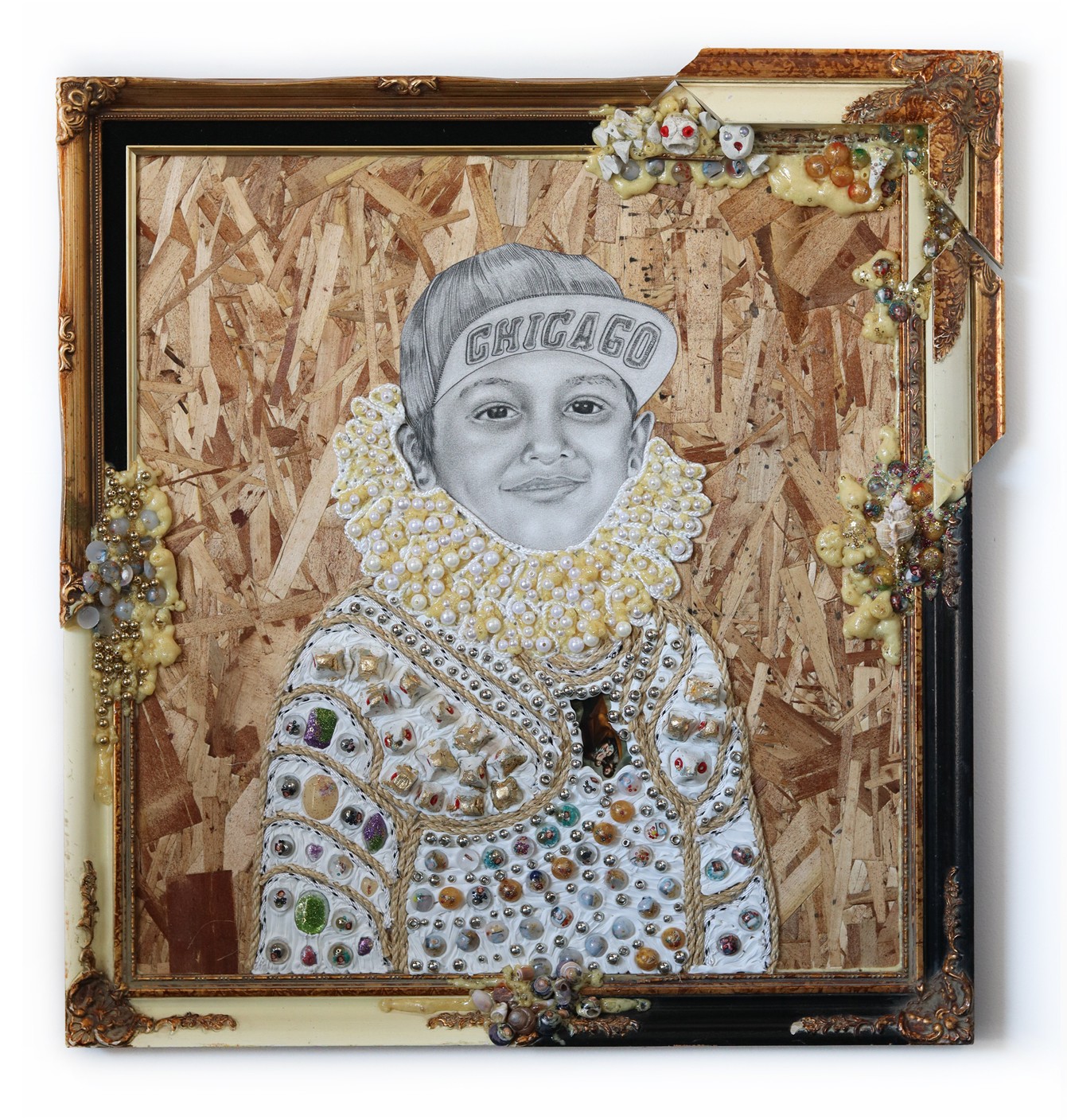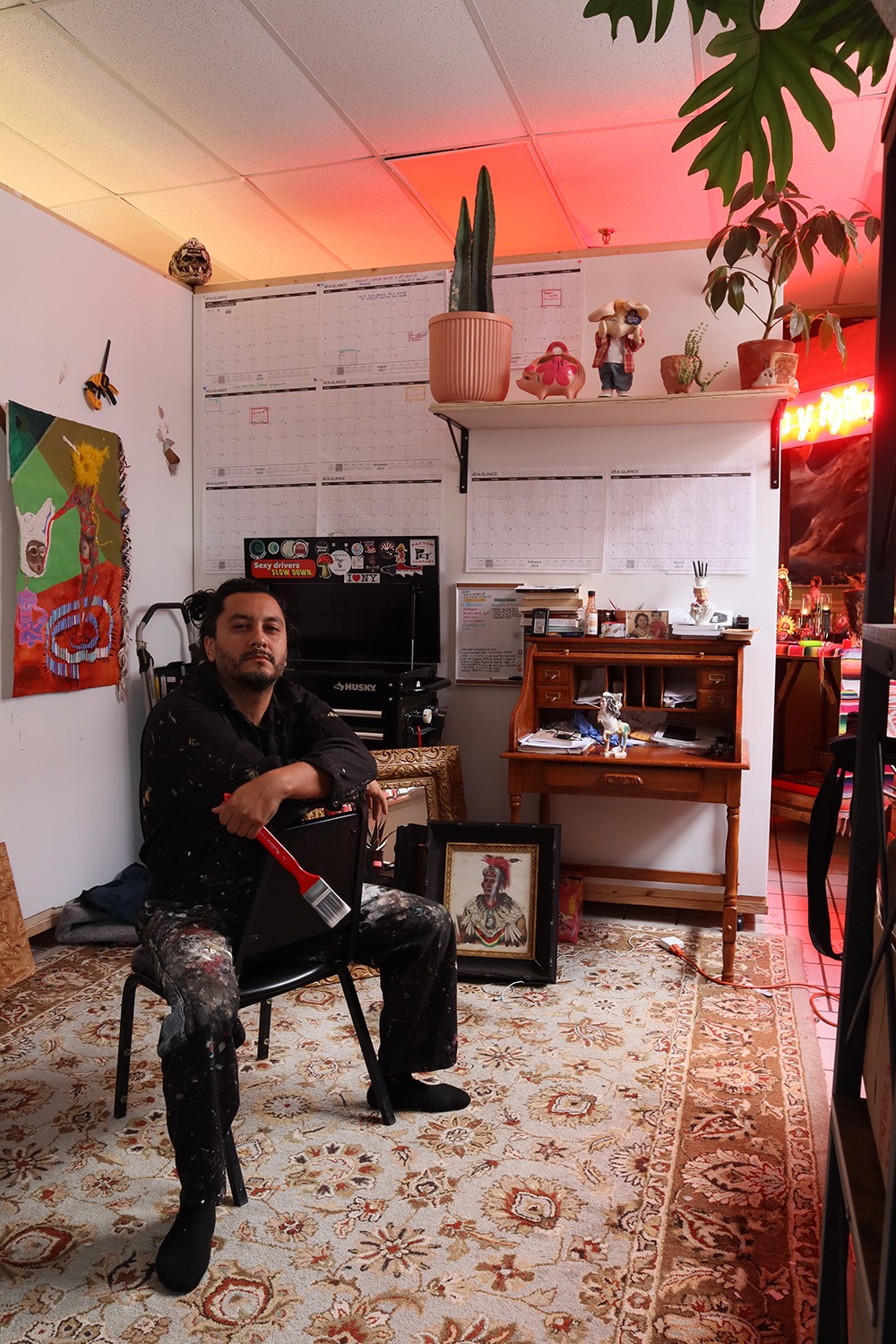We caught up with the brilliant and insightful Luis Sahagun a few weeks ago and have shared our conversation below.
Alright, Luis thanks for taking the time to share your stories and insights with us today. We’d love to hear about a project that you’ve worked on that’s meant a lot to you.
I was not supposed to make it. As an undocumented child growing up in an impoverished Chicago suburb surrounded by police corruption and violence, my future was bleak. I had to camouflage myself in toughness in order to survive and nearly lost myself to the streets. After two of my best friends fell victim to gang homicide, another was imprisoned in juvenile detention, and I myself was falsely accused of attempted murder, I knew my life had to change. I became the first in my family to graduate from college, eventually earning an MFA.
My name is Luis Alvaro Sahagun Nuño. I was born in Guadalajara, Jalisco, Mexico in 1982. Both my paternal and maternal grandfathers came to the United States in the 1940s under the Bracero Program, which granted Mexican workers short-term labor contracts during WWII. My mother and father later lived between Mexico and the US, where they found work in the fields and in Chicago’s steel industry. My family moved permanently to Chicago in 1985, where we lived undocumented until naturalized in 1995 under Reagan’s Immigration Reform and Control Act.
Inside me live multiple origins, communities, and wounds that coalesce into my project, Alivio y Asilo (Relief & Refuge). Blending my art practice and lineage with Curanderismo, a traditional medicine system, Alivio y Asilo that introduces the curative properties of portraiture as a means of helping people move through trauma. This project focuses on individuals experiencing legacies of oppression due to colonization by creating collaborative portraits of them as limpias or soul retrievals.
Alivio y Asilo interweaves contemporary portraiture and spiritual cleansing rites as antidotes against illnesses caused from colonization’s oppression, creating healing rituals resulting in works of art. Alivio y Asilo is an individualized and personal approach to portraiture that re-imagines the relationship between sitter and artist, as I will work closely with my subjects over an extended period of time, using intuitive wisdom and divine guidance. This project opens up new possibilities for what portraiture can achieve.
The portraits I create are a form of individualized treatment aimed at cleansing the subject’s spirit via herbs, energy work, and rituals. To begin a portrait I transform into a spiritual consultant. I assess the person’s emotional situation by asking them what burdens they want to release. Next, I embark on a shamanic journey, using the medicine wheel to procure the cleansings, healings, and/or purifications that are needed as I tap into the spirit world by connecting with my Nagual, or spirit guide. I then work on the portrait over a number of sessions while performing multiple limpias, drawing facial features in charcoal and fashioning clothing and other features from miniature animal sculptures I make to “communicate” a recommended medicine. I also add custom-made resin beads that are “charged” with plant medicine, crystals, chants and photographic images important to the subject or person.
As the grandson of a curandera and myself a trained apprentice in this practice, I believe that Curanderismo is a gift from our ancestors, one that teaches us that the greatest medicine to heal from oppression is already inside us.


Luis, before we move on to more of these sorts of questions, can you take some time to bring our readers up to speed on you and what you do?
As an interdisciplinary artist, I create drawings, sculptures, paintings, performances, and civic activations that confront the palpable inescapability of race and transform art into an act of cultural and spiritual reclamation. I conjure indigenous spiritualities to embody the aesthetics of personal histories, cultural resistance, and colonial disruption. I engage audiences through exhibitions, performances, and pedagogy to invoke critical awareness and advance visual culture and thinking. My work is rooted in civic engagement and it could not exist without audience connection and response. As the grandson of a Curandera and myself a Curandero apprentice, when I make art I am making a mystical instrument that forges a pre-conquest connection in order to interrupt eurocentric models and heal wounds of colonization. My art combats historical and cultural erasure and uses creativity as a decolonizing ritual.
I spent ten years as a construction worker, pushing my body to its limits as I poured concrete and installed drywall. Now, I use the skills of the construction worker to create objects in homage to the undocumented laboring class, a lineage my family is part of. My materials are silicone, lumber, drywall, concrete, and hardware. These atypical fine arts materials, when mixed with beads, sea shells, rope, and maize, create artworks that celebrate the craft of brown labor while immortalizing my stories and the stories of my communities.
I have exhibited at venues including the Museum of Contemporary Art, Chicago, IL; DePaul Art Museum, and International Exposition of Contemporary Art (EXPO), Chicago, IL; amongst many others. My artwork has been covered in publications and media outlets such as ArtForum, NPR, MundoFOX, and PBS Chicago. Recently, I was spotlighted on national television for receiving the 3Arts Award, which honors artists with unique voices helping to shape, shift, and touch the world. I am also finalizing an artist-in-residency program in Critical Race Studies at Michigan State University, where the Dean of the College of Arts & Letters, Christopher P. Long, quoted my artistic contribution as a “catalyst for conversations and interventions around culture change.” The exposure and acclaim my work receives promotes my message of cultural diversity within the arts and creates spaces where critical dialogues around issues of importance to local communities of color may occur.


Let’s talk about resilience next – do you have a story you can share with us?
I was not supposed to make it. As an undocumented child growing up in an impoverished Chicago suburb surrounded by police corruption and violence, my future was bleak. I camouflaged myself in toughness in order to survive and nearly lost myself to the streets. However, after two of my best friends fell victim to gang homicide, another was imprisoned in juvenile detention, and I myself was falsely accused of an attempted murder, I gained unforeseen clarity. I redirected value from street cred to academic merit and became the first in my family to graduate from college, eventually earning a Master’s of Fine Arts.
After college, I worked for a furniture design company where I became one of their top design engineers and was instrumental in financially transforming them from a 1 million to a 4 million dollar company. After, I joined a Fortune 500 design company’s research and development team. I share this part of my journey because at this point in my life I was financially successful, but I was existentially lost. The material things that I had meant nothing to me, but society told me that in order for me to be happy I needed to have what others wanted. I had lost sight of what was important to me.
In 2008, I was laid off due to the economic recession and after a year of fighting depression I went for a walk in my community and discovered a local art gallery. Union Street Gallery offered me an internship that granted me access to artists and their studios. This is where I was reminded of my love for art. Art became a vehicle for me to examine who I was in this world and how I could contribute to society. I believe art has the power to transform lives because it transformed mine.


In your view, what can society to do to best support artists, creatives and a thriving creative ecosystem?
Art is a fundamental part of human existence. I would love to see a world in which society supports local art and artist for its power to stimulates emotional and intellectual growth, build community, and bring aesthetic enjoyment. I think part of the problem is the commercialization of art overshadows the support for more avant-garde or non-commercial forms of artistic production and expression. I wish that society as a whole would take some time to explore and learn about the importance of art. Society can support artist by buying local, visiting art galleries (and buying), donating to local individual artist (not just 501 c organizations), and by being cheerleaders for your local creatives.


Contact Info:
- Website: www.luissahagun.com
- Instagram: @luis_alvaro_sahagun


